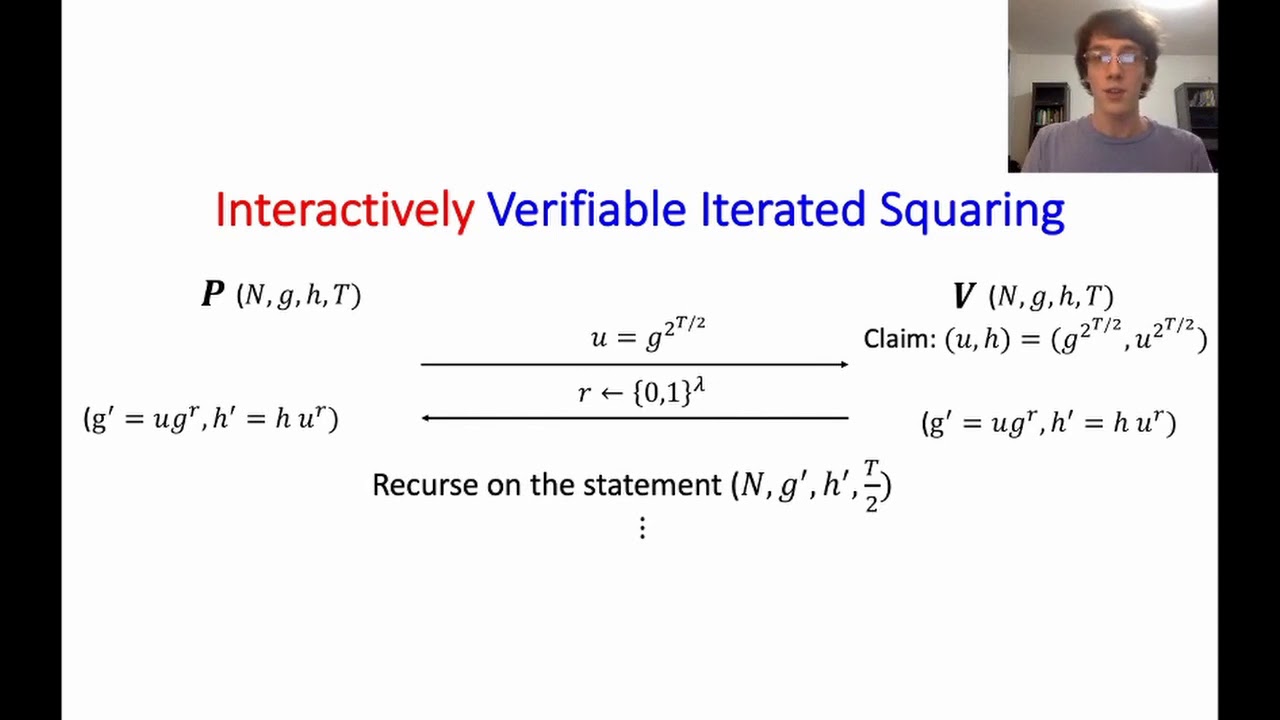Welcome to the resource topic for 2020/772
Title:
Fiat-Shamir for Repeated Squaring with Applications to PPAD-Hardness and VDFs
Authors: Alex Lombardi, Vinod Vaikuntanathan
Abstract:The Fiat-Shamir transform is a methodology for compiling a (public-coin) interactive proof system for a language L into a non-interactive argument system for L. Proving security of the Fiat-Shamir transform in the standard model, especially in the context of succinct arguments, is largely an unsolved problem. The work of Canetti et al. (STOC 2019) proved the security of the Fiat-Shamir transform applied to the Goldwasser-Kalai-Rothblum (STOC 2008) succinct interactive proof system under a very strong optimal learning with errors'' assumption. Achieving a similar result under standard assumptions remains an important open question. In this work, we consider the problem of compiling a different succinct interactive proof system: Pietrzak's proof system (ITCS 2019) for the iterated squaring problem. We construct a hash function family (with evaluation time roughly $2^{\lambda^{\epsilon}}$) that guarantees the soundness of Fiat-Shamir for this protocol assuming the sub-exponential ($2^{-n^{1-\epsilon}}$)-hardness of the $n$-dimensional learning with errors problem. (The latter follows from the worst-case $2^{n^{1-\epsilon}}$ hardness of lattice problems.) More generally, we extend the bad-challenge function’’ methodology of Canetti et al. for proving the soundness of Fiat-Shamir to a class of protocols whose bad-challenge functions are not efficiently computable. As a corollary (following Choudhuri et al., ePrint 2019 and Ephraim et al., EUROCRYPT 2020), we construct hard-on-average problems in the complexity class \mathbf{CLS}\subset \mathbf{PPAD} under the 2^{\lambda^\epsilon}-hardness of the repeated squaring problem and the 2^{-n^{1-\epsilon}}-hardness of the learning with errors problem. Under the additional assumption that the repeated squaring problem is ``inherently sequential’', we also obtain a Verifiable Delay Function (Boneh et al., EUROCRYPT 2018) in the standard model. Finally, we give additional PPAD-hardness and VDF instantiations demonstrating a broader tradeoff between the strength of the repeated squaring assumption and the strength of the lattice assumption.
ePrint: https://eprint.iacr.org/2020/772
Talk: https://www.youtube.com/watch?v=Sse0Jwv-zHM
See all topics related to this paper.
Feel free to post resources that are related to this paper below.
Example resources include: implementations, explanation materials, talks, slides, links to previous discussions on other websites.
For more information, see the rules for Resource Topics .
